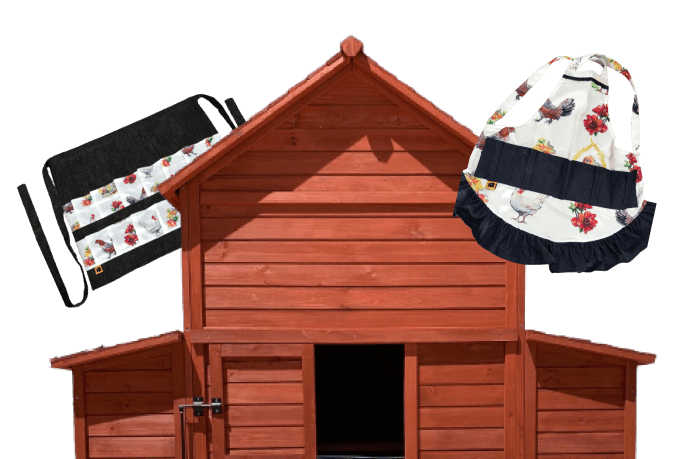Narragansett Turkey
Narragansett Turkey
The Narragansett Turkey is a rare heritage breed, recognized by the American Standard of Perfection since 1874. Originating from European strains and the American Wild Turkey in the Narragansett region of Rhode Island, this breed's lineage dates back as far as the 1600s. Known for its excellent foraging abilities, the Narragansett Turkey is ideal for both backyard and farm settings, helping to control insect populations naturally.
 Appearance:
Appearance:
-
Feather Color: The Narragansett Turkey has a beautiful appearance with light gray, bronze, and black feathers. The plumage has a dark brown or black base with white or silver-gray tips, giving it a spangled effect. The feathers shimmer in the light and the turkey looks elegant and iridescent. Toms have more vibrant colors than hens but both have the same color pattern.
-
Body Type: The Narragansett Turkey is a medium-sized bird; toms weigh 20-30 pounds and hens 10-15 pounds. It’s smaller than many commercial breeds like the Broad Breasted White, but has a well proportioned muscular body with a broad chest and deep body making it a great meat bird.
-
Head and Beak: The Narragansett Turkey has a distinctive head with a long red snood (the fleshy thing that hangs over the beak) that elongates during mating displays. The snood is red with a corresponding set of red wattles hanging from the sides of the neck. The beak is small and sharp for foraging.
-
Legs and Feet: The legs of the Narragansett Turkey are yellow or orange, strong and muscular. They are well suited to support the bird’s size. The feet are sturdy with three toes on each foot, so the turkey can move around despite its size.
-
Tail: The tail of the Narragansett Turkey is one of its most beautiful features. It’s fan-shaped, large, and has a mix of dark and iridescent feathers with white or silver tips. The tail feathers are long and elegant.
Temperament:
-
Calm and Friendly: The Narragansett Turkey is known for being calm and gentle making it easier to manage than some other breeds. These turkeys are less aggressive and more docile making them a great choice for homesteads, family farms and backyard flocks. They tolerate human interaction and are good with children and other animals.
-
Curious and Intelligent: Like other heritage breeds, the Narragansett Turkey is intelligent and naturally curious. They love to explore, forage and engage in natural behaviors. They are active but not flighty and happy to roam in free range.
-
Good for Free-Range: The Narragansett Turkey is well suited for free range where they can forage for insects, seeds and plants. They are naturally inclined to roam and explore their surroundings making them great for larger spaces. While they are less likely to fly than some other turkey breeds they still need a secure area to protect them from predators.
Meat Production:
-
Moderate Size: The Narragansett Turkey is a medium size turkey compared to commercial breeds. Toms can weigh 20-30 pounds and hens 10-15 pounds. Smaller than the larger commercial breeds but still a good amount of meat.
-
Flavorful Meat: The meat of the Narragansett Turkey is prized for its rich flavor. It’s often described as moist, tender and juicy with a traditional turkey flavor more pronounced than commercial turkeys. The breast meat is lean but tender and the dark meat is flavorful and rich.
-
Slow Growth Rate: As a heritage breed the Narragansett Turkey grows slower than commercial turkeys. They reach slaughter weight in about 24-28 weeks. While this slower growth rate means they are less efficient for commercial production it contributes to the exceptional flavor of their meat making them a choice for those who appreciate traditional poultry.

Health and Care:
-
Hardy and Adaptable: The Narragansett Turkey is a hardy breed well adapted to different climates. They can handle cold and warm weather with proper shelter. They are less prone to the health problems that can affect more commercial turkey breeds such as leg and heart issues due to their slower growth and more natural development.
-
Easy Keeper: Narragansett Turkeys are relatively easy keepers. They don’t require special feeding and thrive on grains, fresh veggies and forage. However regular checks for parasites such as mites and lice are important for their health.
-
Watch for Health Issues: Like all turkeys the Narragansett Turkey should be monitored for common poultry diseases such as blackhead and coccidiosis. Keeping their living space clean and dry and proper nutrition will help prevent these issues.
Housing:
-
Space: The Narragansett Turkey needs room to move around especially since it’s an active breed. If kept in a coop they should have access to large outdoor areas to forage, roam and display natural behaviors. A secure space is essential to protect them from predators.
-
Protection from Predators: As the Narragansett Turkey is a calm and friendly breed it’s susceptible to predation especially at night. A secure coop with strong fencing is necessary to keep these birds safe from common poultry predators such as foxes, raccoons and birds of prey.
Show and Ornamental Qualities:
-
Poultry Shows: The Narragansett Turkey is often shown in poultry shows due to its beautiful appearance and excellent qualities. Its stunning plumage combined with its calm temperament and heritage makes it a favorite among heritage breed enthusiasts and those who appreciate natural old fashioned turkeys.
-
Ornamental Value: The Narragansett Turkey is also highly valued as an ornamental bird due to its beauty and history. It’s often raised for its looks as much as for its meat making it a beautiful and elegant addition to any flock.
Frequently Asked Questions:
What is a Narragansett Turkey?
A rare heritage turkey breed with origins in Rhode Island, recognized for its foraging skills.
Is the Narragansett Turkey good for backyard flocks?
Yes, they are well-suited for both backyard and farm environments.
When was the Narragansett Turkey recognized as a breed?
It was admitted to the American Standard of Perfection in 1874.
Does the Narragansett Turkey help with pest control?
Yes, they are excellent at managing insect populations.
Where did the Narragansett Turkey originate?
It originated in Rhode Island, from European and American Wild Turkey bloodlines.
Narragansett Turkey Facts
- Poultry Show Class: Turkeys
- Weights: Hen—–14 lbs
- Tom—-23 lbs
- Purpose and Type: Egg Laying and Meat; Exhibition
- Egg Color: Off White with brown specks
- Egg Production: Poor
- Egg Size: Large to Extra Large
- Temperament: Active
- Fertility Percentage: 60-75%
- Broody: Setters
- Mating Ratio: 7 Females to 1 Male
- Roost Height: 2+ feet
- Country of Origin: North America
- APA: Yes, Recognized by the Standard of Perfection in 1874
- TLC: Watch Status, considered a Sustainable Heritage Turkey Breed.
- Breeder Farm Source: Poultry Breeding Farm developing our bloodline or strain of pure Narragansett Turkey Breed since 1976.
Notice: We do not sell items on Amazon or other websites.






